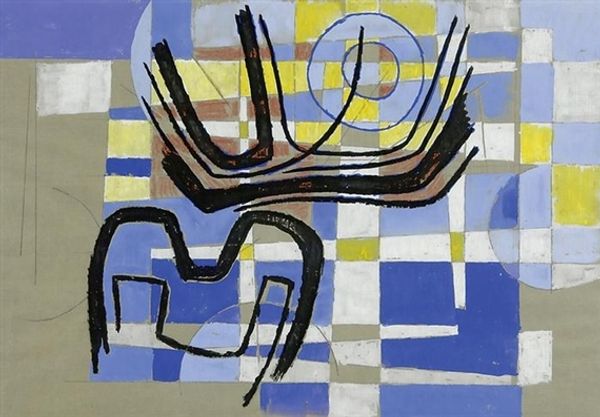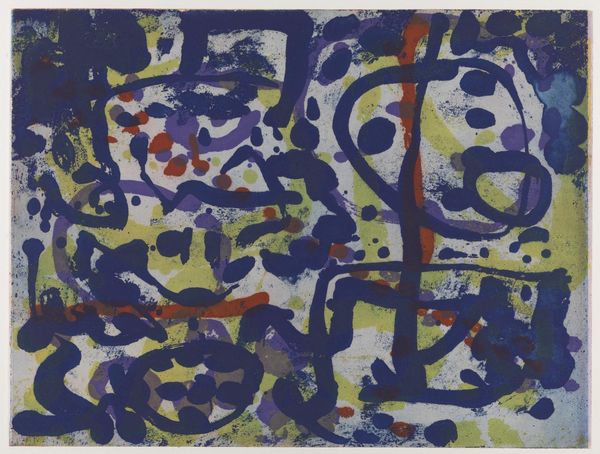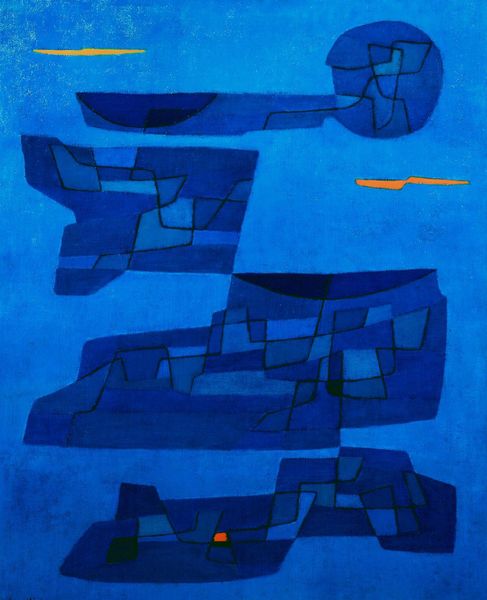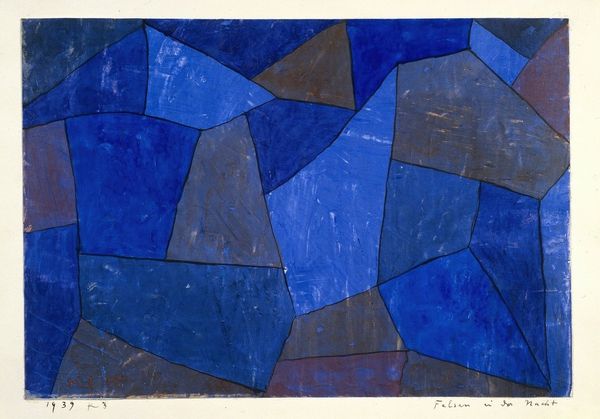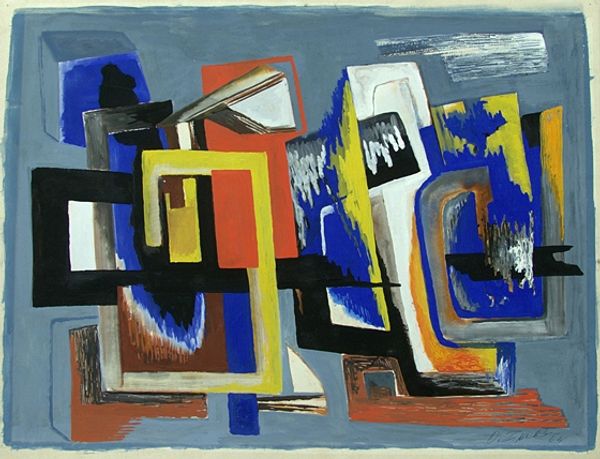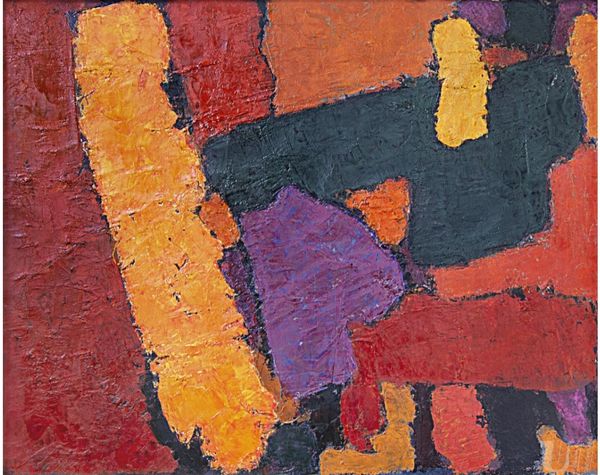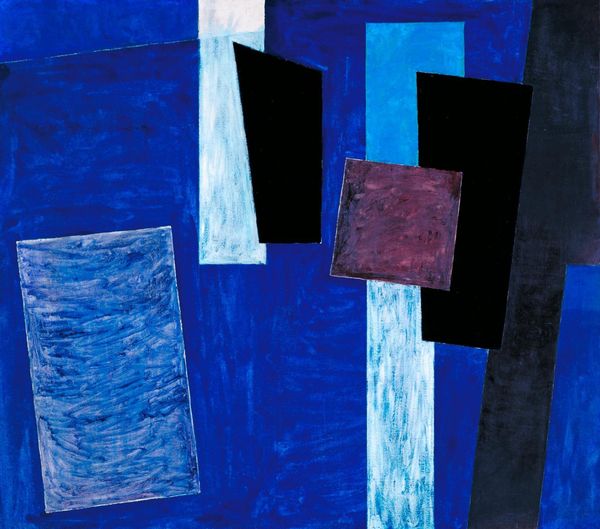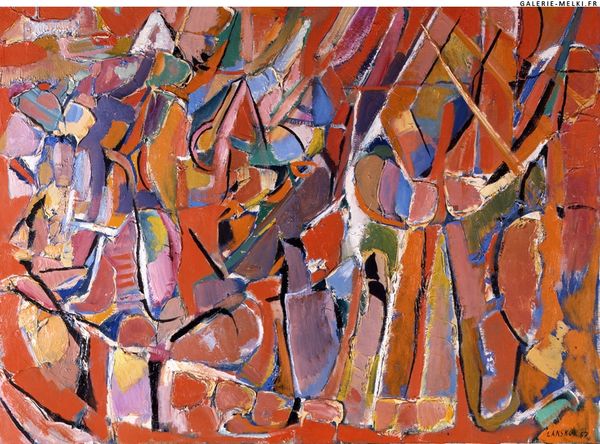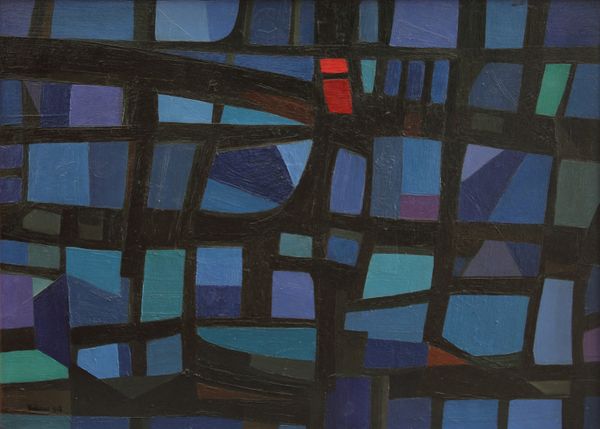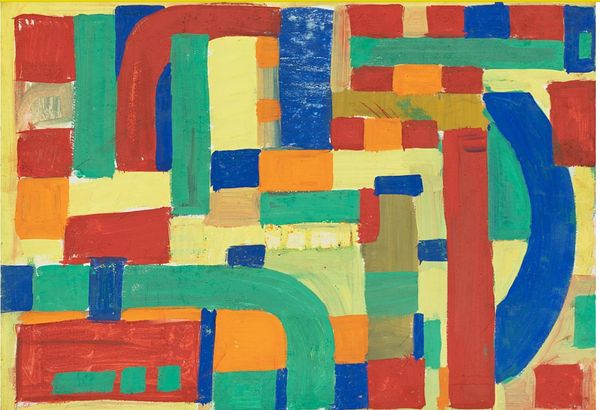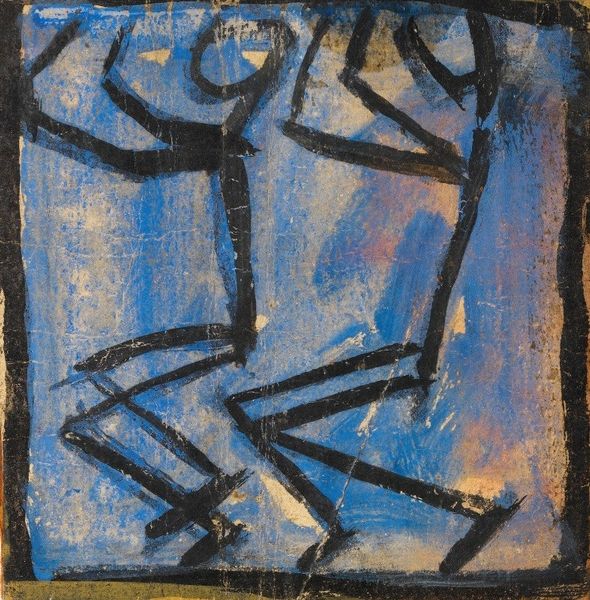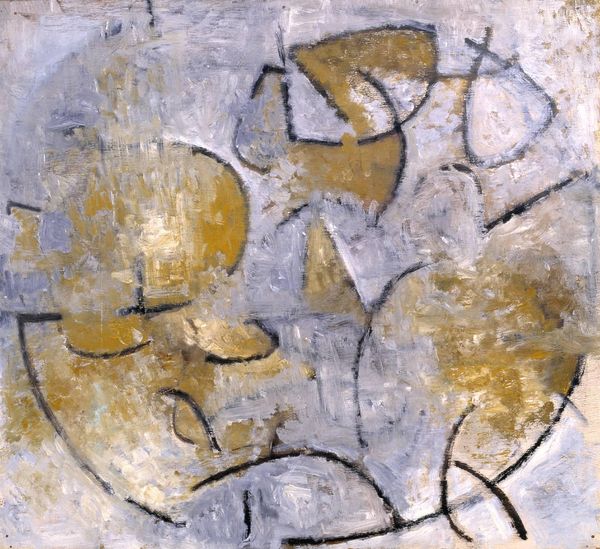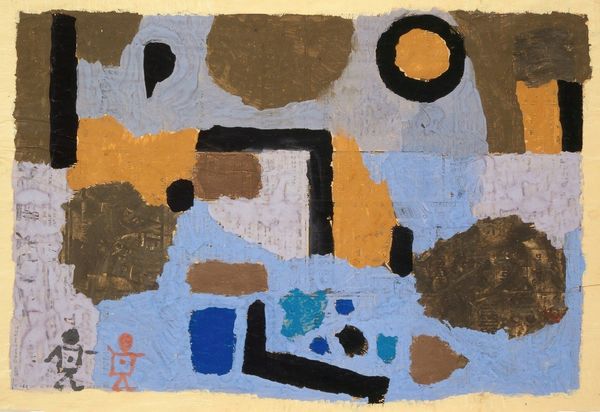
Copyright: Public Domain: Artvee
Editor: Paul Klee's "Blue Night," created in 1937 with tempera, presents a fascinating puzzle of geometric forms. The subdued palette, primarily shades of blue, creates a contemplative and slightly melancholic mood. What can you tell me about it? Curator: This work offers a lens through which we can examine the socio-political context of its creation. Klee was grappling with increasing political instability in Germany, and was dismissed from his teaching position at the Dusseldorf Academy in 1933, declared a "degenerate artist" by the Nazis. How do you think this biographical detail might be reflected in his artistic choices here? Editor: Hmm, perhaps the fractured geometric forms and somber colors reflect the fragmentation and anxiety of the time? Is the choice of 'Blue Night' as a title an indication of those feelings? Curator: Precisely. The painting's abstraction isn't just a stylistic preference; it's also a form of resistance, a retreat into subjective experience as a way of grappling with a world turned upside down. Notice also the seeming lack of a central focus; this diffusion, along with the use of geometric form, mirrors the fracturing of identity that many artists experienced during this period, doesn't it? Editor: It really changes how I see the piece. It's not just abstract, it is a political statement, a subtle rebellion even. Curator: Yes, and it's essential to remember that museums and galleries, even today, are not neutral spaces. They participate in shaping our understanding of art, sometimes reinforcing established narratives or offering spaces for critical reevaluation like we're doing here. Editor: I never thought about abstract art having such a specific connection to socio-political events. Curator: Seeing the layers within something so abstract reveals the impact socio-political events had on Paul Klee and how they permeate even the quietest works.
Comments
No comments
Be the first to comment and join the conversation on the ultimate creative platform.
